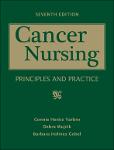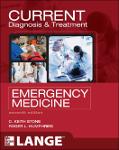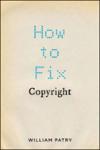Search
Author
- Gobel, Barbara Holmes (1)
- Humphries, Roger L. (1)
- Judson, Dean H (1)
- Patry, William (1)
- next >
Subject
- Nursing (2)
- 22/2011/TT-BYT (1)
- 23/2011/TT-BYT (1)
- Cancer (1)
- next >
Has File(s)
- true (6)
Search Results
In his now classic writings on the origin of cancer, Sir Richard Doll1 proposed 3 potential causative factors underlying tumor development: (1) environmental factors, particularly diet, industrial pollution, and viruses; (2) systemic factors, including breakdowns in immunosurveillance; and (3) genetic factors, such as the degree of susceptibility to cancer. Since Doll’s publications in the late 1970s, the biology underlying these proposed causative factors—which were derived largely from epidemiological studies—has been carefully scrutinized to determine the causes of cancer at the biochemical, cellular, and molecular levels. Because
of the intensity of biological research and the rapidity with which findings have become available, we now know that cancer is a disease resulting fro... |
Current Emergency Diagnosis & Treatment, seventh edition, is designed to present concise, easy-to-read, practical information on the diagnosis and treatment of a wide spectrum of conditions that present to the emergency department. The chapters emphasize the immediate management of life-threatening problems and then present the evaluation and treatment of specific disorders. We trust that this text will aid all practitioners of emergency medicine in providing care to their patients. |
This brief represents a comprehensive review of methods for estimating characteristics of the foreign-born population in the United States, specifically oriented toward characteristics by legal status. A variety of methods have been proffered over the past many decades, in a large variety of venues; this work brings them together, attempts to impart some order on the definition of “legal status,” and describes strengths and deficiencies both in methods and in data. The authors have a combined 50 years of experience in both demographic and statistical methodology. |
These are the key questions William Patry addresses in How to Fix Copyright. We all share the goals of increasing creative works, ensuring authors can make a decent living, furthering culture and competitiveness and ensuring that knowledge is widely shared, but what role does copyright law actually play in making these things come true in the real world? Simply believing in lofty goals isn't enough. If we want our goals to come true, we must go beyond believing in them; we must ensure they come true, through empirical testing and adjustment. |
Thông tư này quy định tổ chức và hoạt động của khoa Dược bệnh viện, chức trách, nhiệm vụ của các chức danh trong khoa Dược bệnh viện. |
Thông tư này hướng dẫn sử dụng thuốc trong các cơ sở y tế có giường bệnh. |





